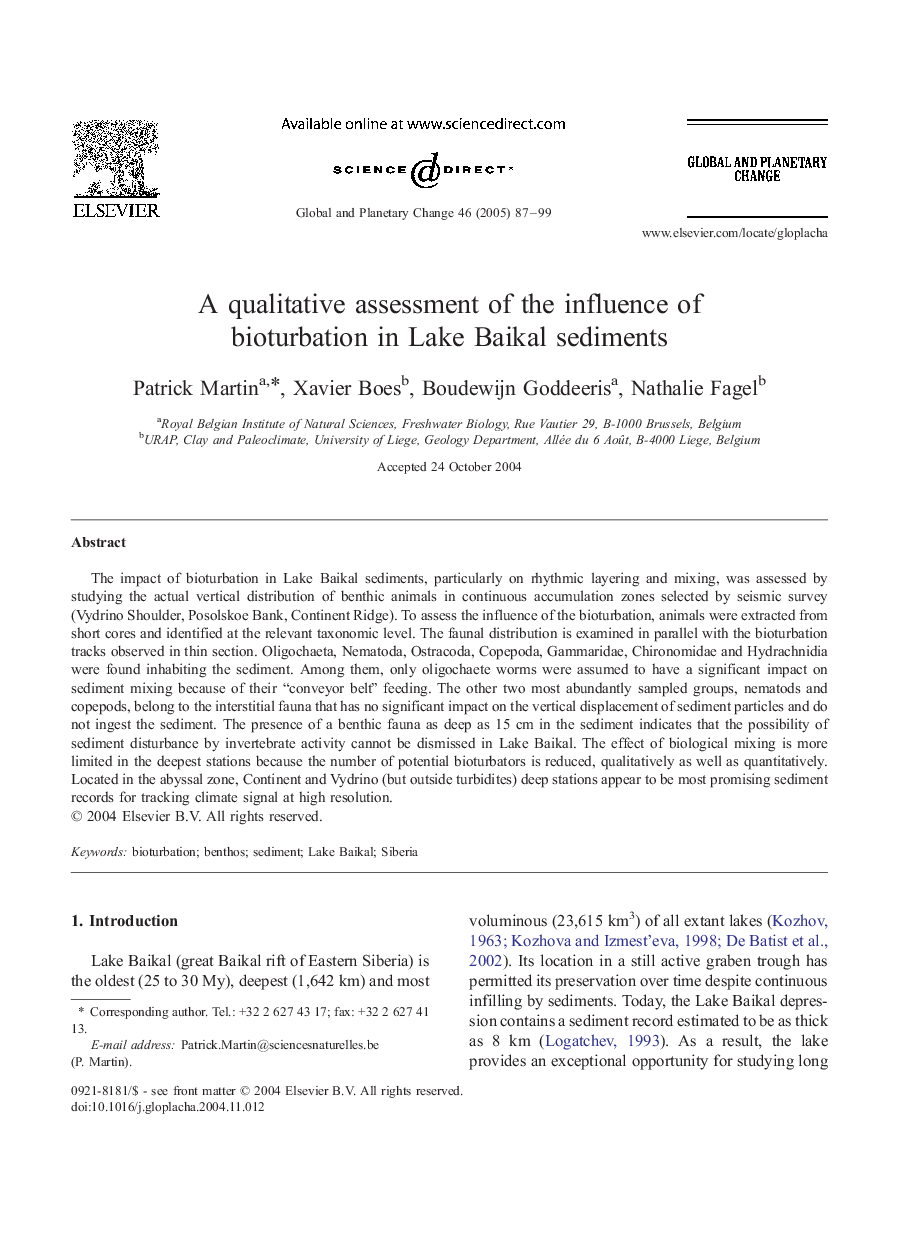| کد مقاله | کد نشریه | سال انتشار | مقاله انگلیسی | نسخه تمام متن |
|---|---|---|---|---|
| 9462398 | 1621745 | 2005 | 13 صفحه PDF | دانلود رایگان |
عنوان انگلیسی مقاله ISI
A qualitative assessment of the influence of bioturbation in Lake Baikal sediments
دانلود مقاله + سفارش ترجمه
دانلود مقاله ISI انگلیسی
رایگان برای ایرانیان
کلمات کلیدی
موضوعات مرتبط
مهندسی و علوم پایه
علوم زمین و سیارات
فرآیندهای سطح زمین
پیش نمایش صفحه اول مقاله

چکیده انگلیسی
The impact of bioturbation in Lake Baikal sediments, particularly on rhythmic layering and mixing, was assessed by studying the actual vertical distribution of benthic animals in continuous accumulation zones selected by seismic survey (Vydrino Shoulder, Posolskoe Bank, Continent Ridge). To assess the influence of the bioturbation, animals were extracted from short cores and identified at the relevant taxonomic level. The faunal distribution is examined in parallel with the bioturbation tracks observed in thin section. Oligochaeta, Nematoda, Ostracoda, Copepoda, Gammaridae, Chironomidae and Hydrachnidia were found inhabiting the sediment. Among them, only oligochaete worms were assumed to have a significant impact on sediment mixing because of their “conveyor belt” feeding. The other two most abundantly sampled groups, nematods and copepods, belong to the interstitial fauna that has no significant impact on the vertical displacement of sediment particles and do not ingest the sediment. The presence of a benthic fauna as deep as 15 cm in the sediment indicates that the possibility of sediment disturbance by invertebrate activity cannot be dismissed in Lake Baikal. The effect of biological mixing is more limited in the deepest stations because the number of potential bioturbators is reduced, qualitatively as well as quantitatively. Located in the abyssal zone, Continent and Vydrino (but outside turbidites) deep stations appear to be most promising sediment records for tracking climate signal at high resolution.
ناشر
Database: Elsevier - ScienceDirect (ساینس دایرکت)
Journal: Global and Planetary Change - Volume 46, Issues 1â4, April 2005, Pages 87-99
Journal: Global and Planetary Change - Volume 46, Issues 1â4, April 2005, Pages 87-99
نویسندگان
Patrick Martin, Xavier Boes, Boudewijn Goddeeris, Nathalie Fagel,